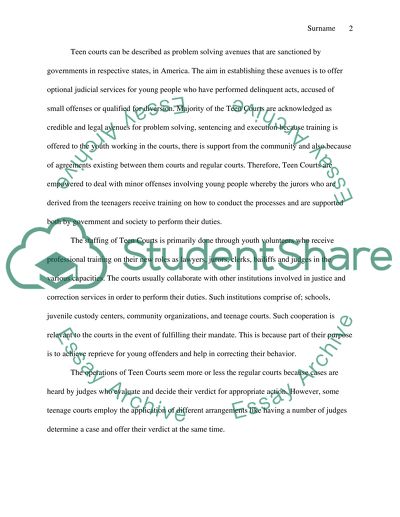Cite this document
(“Teen Courts Research Paper Example | Topics and Well Written Essays - 1500 words”, n.d.)
Teen Courts Research Paper Example | Topics and Well Written Essays - 1500 words. Retrieved from https://studentshare.org/sociology/1450784-teen-courts-what-they-are-and-how-do-they-work
Teen Courts Research Paper Example | Topics and Well Written Essays - 1500 words. Retrieved from https://studentshare.org/sociology/1450784-teen-courts-what-they-are-and-how-do-they-work
(Teen Courts Research Paper Example | Topics and Well Written Essays - 1500 Words)
Teen Courts Research Paper Example | Topics and Well Written Essays - 1500 Words. https://studentshare.org/sociology/1450784-teen-courts-what-they-are-and-how-do-they-work.
Teen Courts Research Paper Example | Topics and Well Written Essays - 1500 Words. https://studentshare.org/sociology/1450784-teen-courts-what-they-are-and-how-do-they-work.
“Teen Courts Research Paper Example | Topics and Well Written Essays - 1500 Words”, n.d. https://studentshare.org/sociology/1450784-teen-courts-what-they-are-and-how-do-they-work.


